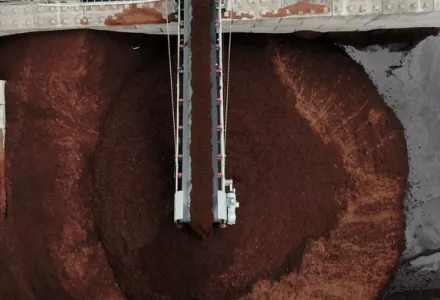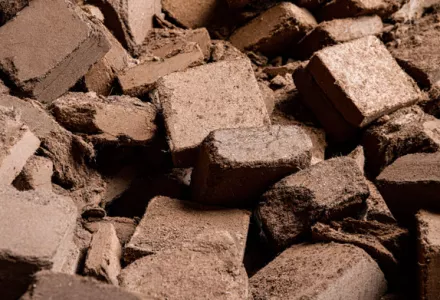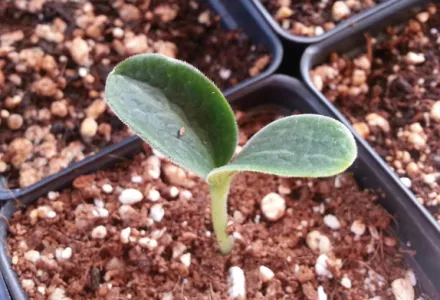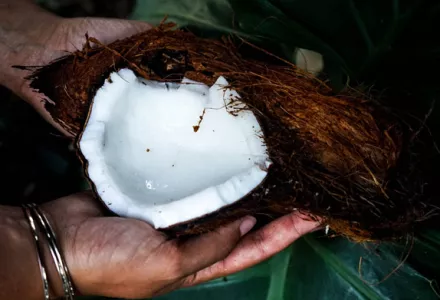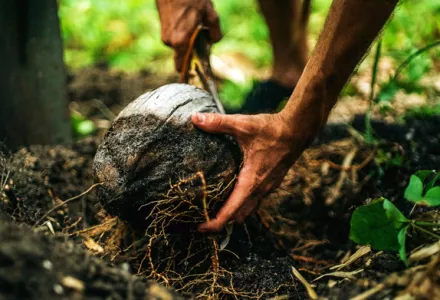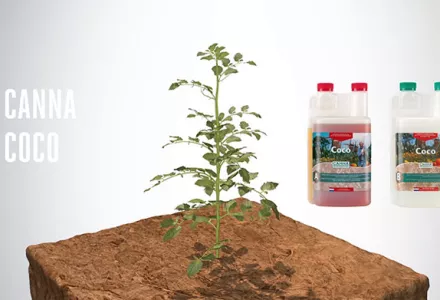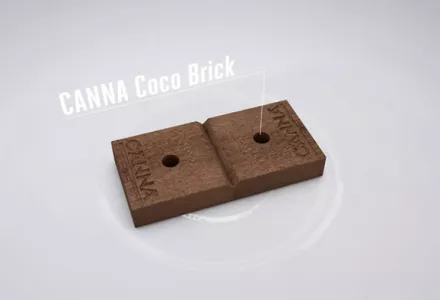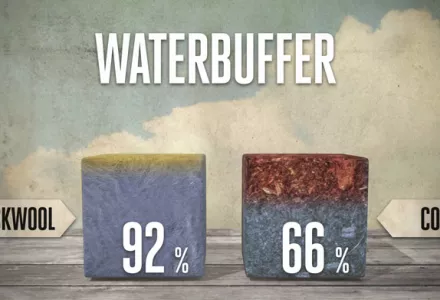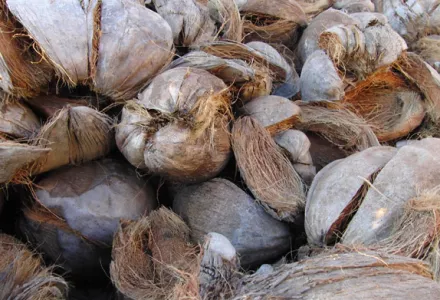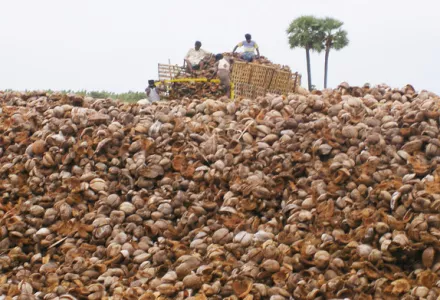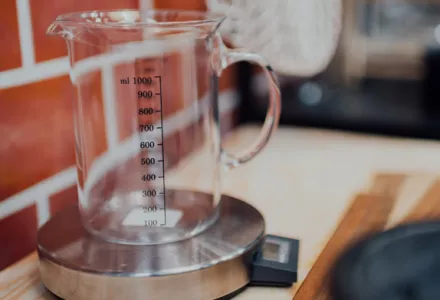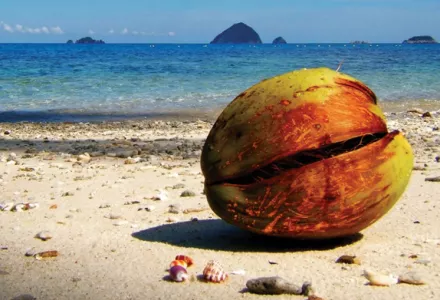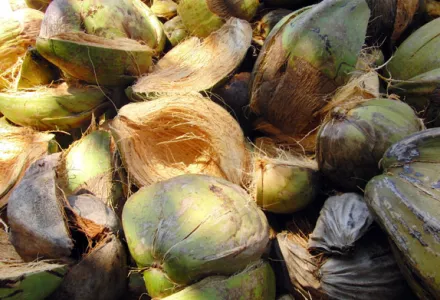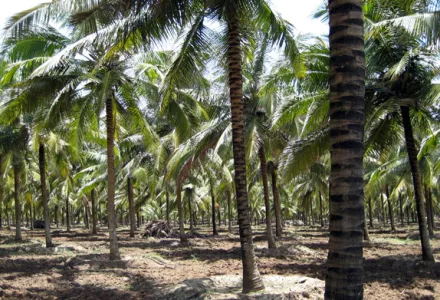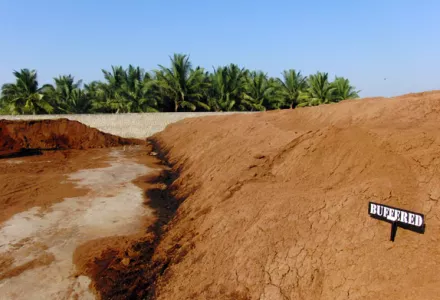CANNA COCO easy to use. Because of the high costs of nutrients and the complexity of sophisticated hydroponic systems, more and more growers turn to CANNA COCO for their personal needs. One satisfied customer stated: “Although I’ve already grown a few harvests, I must honestly say that I still haven’t got a clue about growing. With soil everything always went wrong. First, too much water, and then too little. But, that’s history since I’ve been using CANNA COCO. I’m the perfect example that COCO substrate is idiot proof.” Learn more about growing with COCO here.
Higher yields
Besides water, air is essential for the plant’s roots system. Research across various medium types shows that more air leads to quicker and more intensive rooting, 6-10% higher yields and lower fertilizer use. Quicker and more intensive rooting means better root function in taking up water and nutrients, keeping up with the plants requirements. A way of achieving a higher air level in your substrate is to drip irrigate less often. More water is taken up from the substrate, the root system develops stronger, and moisture saturation occurs less often. The tests revealed that drip irrigating only once a day meant that 3% more air was present in the substrate. You drip less with CANNA COCO.
Watering COCO
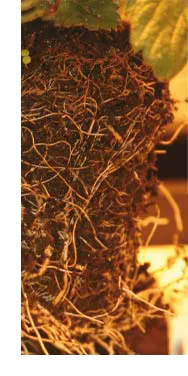
CANNA COCO is made up of thousands of capillary micro-sponges that retain almost 1000 % of their own weight in water. Therefore COCO retains an enormous buffer of water and nutrients. It is recommended that the grower keeps the media a bit dry rather than soaking wet. Wet circumstances form an ideal basis for fungal diseases like Pythium. A drier substrate passes more air through to the roots stimulating them to absorb water and nutrients more actively. This results in a faster growth and higher yields.
Another important instrument is timing. Once the COCO has become too wet, reduce or pause watering until the COCO has dried out and then start normal watering again. Check the moisture content of the COCO by hand or by determining its weight by lifting the pot or slab. A rule of thumb for watering fully-grown plants is 4 to 6 liters per m2 a day. By decreasing the dripping frequency and by increasing the amount of nutrients per watering, the best use is made of available water and nutrients. This will also improve drainage.
The frequency of watering depends on the evaporation and the water supply in the COCO. A common rule is; one daily watering is sufficient during the first few weeks under normal circumstances; then increase up to 2 times a day; 2 hours after the lamps have been turned on and 2 hours before they are switched off again. Please keep in mind, smaller root volumes per plant (small pots or many plants per slab) will make COCO dry out quickly. Therefore it is critical to water these plants more often.
COCO measuring method
The most reliable method for measuring the nutrient levels in COCO is using the 1: 1.5 extraction method. EC and pH of the root environment can be determined by using this method. The pH and EC (Electrical Conductivity, why it matters) of the drain water generally deviates from the actual root situation, as COCO is able to retain and release elements.
- Take a sample of COCO from the slabs or pots (photo 1). This can be done with a soil core sampler or a trowel. To get a representative sample the COCO must be collected from as many places as possible.
- Collect the sample in a bowl and determine whether it contains the right amount of moisture. The COCO has the right amount of moisture if moisture disappears between your fingers when you squeeze it (photo 2). Add de-mineralized water if necessary and mix the COCO.
- Take a 250 ml measuring jug and fill it with 150 ml of de-mineralized water. Add COCO to the 250 ml mark (photo3). Fully mix and allow the slurry to settle for at least two hours.
- Mix again and measure the pH.
- Then filter this material and measure the EC.

A 1:1.5 analysis can best be done after 3 to 4 weeks. The target values for EC are between 1.1 and 1.3, for the pH, between 5.5 and 6.2. Very high EC values increase the risk of burning symptoms. To limit the risk of burning symptoms, the COCO can be rinsed with acidified water containing Coco A/B nutrient at an EC of 0.65 (pH 5.8).
Crop damage by hard water
Damage to crop caused by hard water Normally, PK 13/14 and CANNA COCO nutrients can be used together. However, in case the tap water is very hard, this combination can cause problems. Very hard water contains high amounts of calcium and the amount of acid necessary to set the pH is relatively high. This is due to a high bicarbonate level in the water. When PK 13/14 is used under such circumstances the risk of precipitation in the water tank increases, and this can cause blocked drippers. If you use very hard water for irrigation it is recommended to use pH – grow (nitric acid) instead of pH – Bloom (Phosphoric acid) to set the pH.

